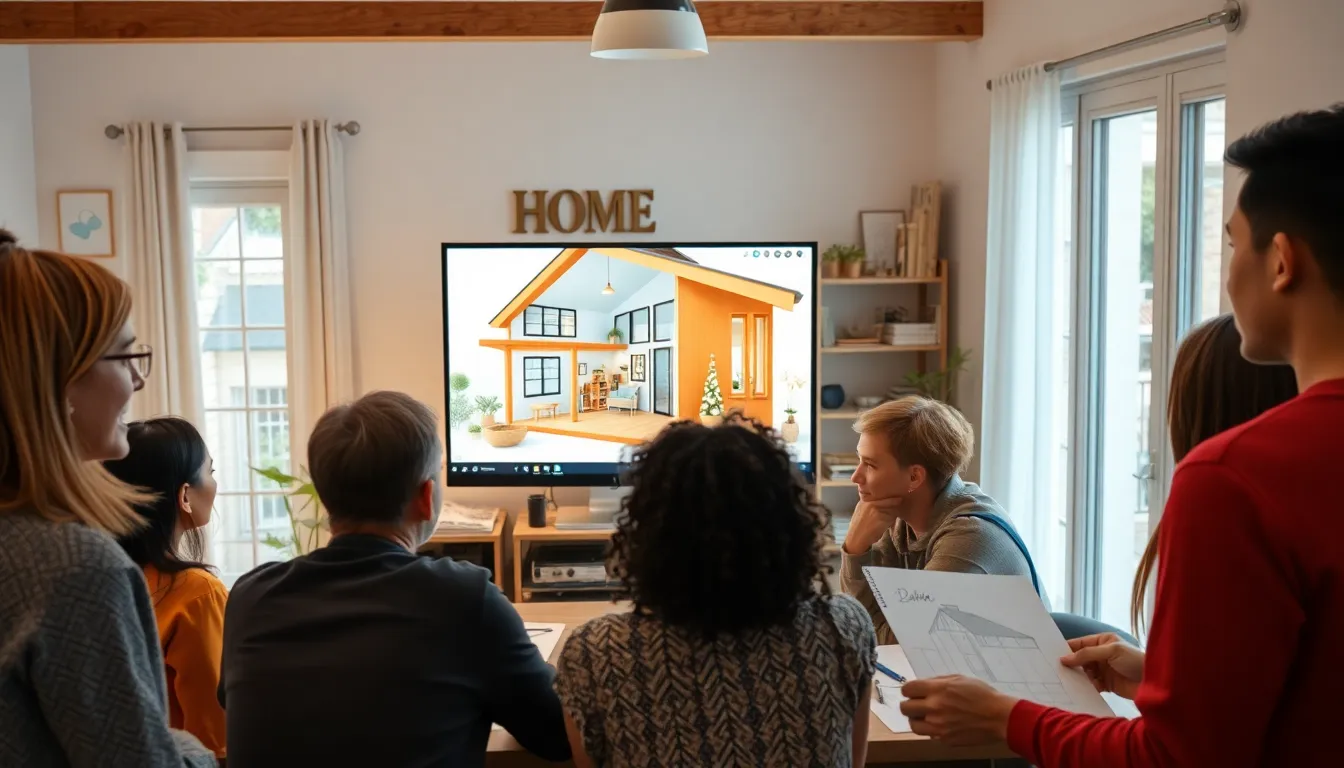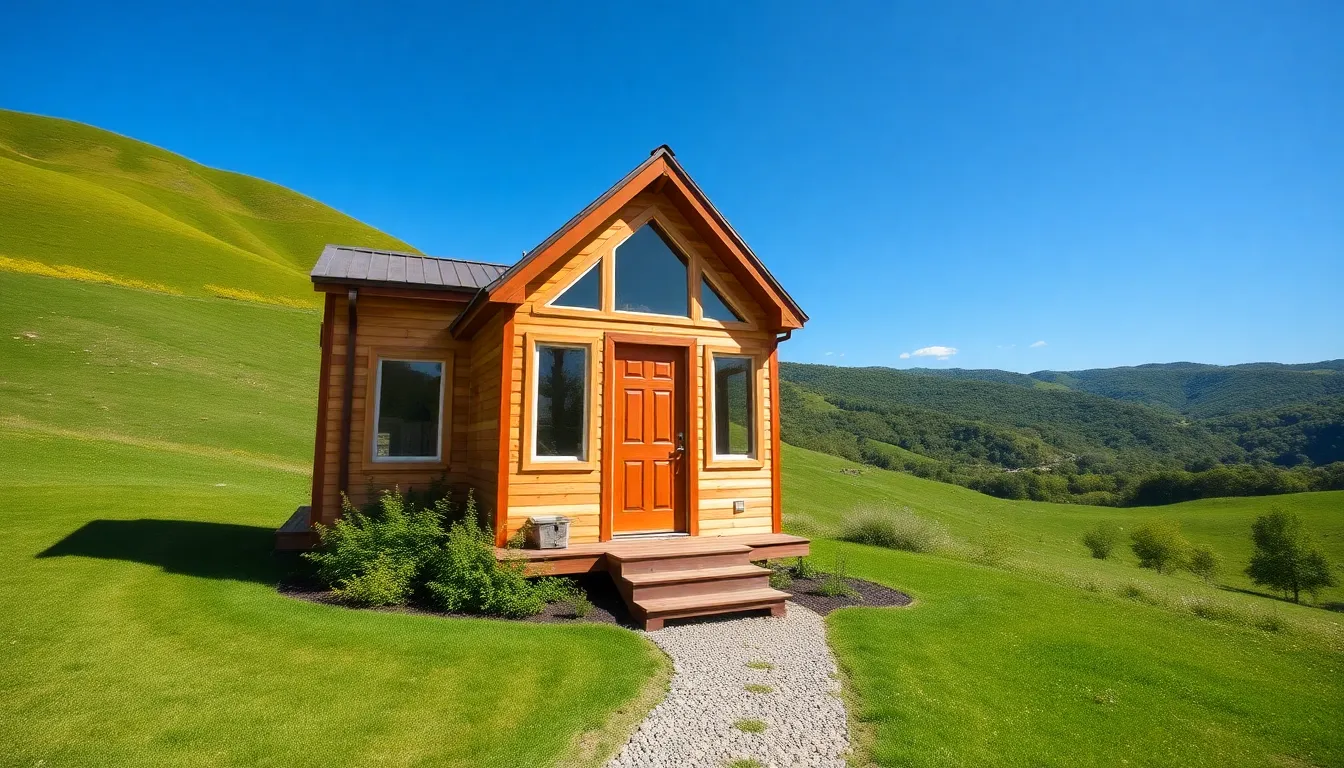In a world where bigger isn’t always better, tiny homes are stealing the spotlight. They’re cozy, efficient, and a delightful way to downsize without sacrificing style. But how does one transform a mere dream into a functional living space? Enter tiny home design software—the magic wand for aspiring minimalists.
Table of Contents
ToggleOverview of Tiny Home Design Software
Tiny home design software provides essential tools for creating practical layouts and aesthetic designs. Such software often includes features that facilitate easy customization, allowing users to visualize their living spaces in 2D or 3D. Choosing the right software can simplify the planning process, ensuring that every square foot is used efficiently.
Many programs offer drag-and-drop functionality, making it user-friendly for beginners. Advanced software might include options for exporting designs to construction documentation, which streamlines the building process. Users can also access extensive libraries of materials and finishes, providing inspiration and practical choices when selecting interior and exterior elements.
Most platforms support smart planning functionalities, including budget tracking and material estimation. By utilizing these features, designers can achieve a comprehensive overview of costs associated with their projects. Certain applications even feature augmented reality capabilities, enabling users to visualize their tiny homes in real-world environments.
Competitively priced options exist in the market, catering to various skill levels and budgets. Popular tools include SketchUp, Tinkercad, and RoomSketcher, which offer diverse functionalities suited for different needs. Users should evaluate their requirements to select the software that aligns with their design vision and technical comfort.
Ultimately, tiny home design software proves beneficial for turning concepts into reality, assisting in every stage from initial sketches to final adjustments. With intuitive interfaces and robust features, these tools empower individuals to create comfortable, stylish living spaces that maximize organization and functionality.
Features to Look For
Tiny home design software includes several critical features that enhance the design experience. These elements ensure users can create efficient and personalized living spaces.
User-Friendly Interface
A user-friendly interface simplifies the design process for all skill levels. Intuitive navigation helps beginners easily become familiar with tools. Clear menus and organized layouts contribute to a more efficient workflow. Every function should be easily accessible, minimizing learning time. Quick tutorials or guides often accompany the software, offering instant support. Customization options allow users to adjust settings based on individual preferences. Therefore, a straightforward setup guarantees a pleasant experience for everyone.
Design Flexibility
Design flexibility is essential for accommodating different tastes and needs. Users often require multiple templates or design styles to explore options. Customizable floor plans enable adjustments to suit specific requirements. Different architectural styles can inspire designs, leading to unique solutions. The ability to incorporate varying room shapes and sizes enhances individual creativity. Additionally, including features for furniture arrangement allows for better space optimization. Flexibility in design tools promotes personalization, making each tiny home truly one-of-a-kind.
3D Visualization
3D visualization adds a dynamic layer to tiny home design software. This feature allows users to see their layout in a realistic format. Virtual walkthroughs provide an immersive experience to envision actual living spaces. Enhancements like shadows and textures can give context to design choices. Real-time rendering enables instant adjustments during the design process. Users can better understand proportion, space utilization, and flow between rooms. Ultimately, 3D visualization transforms abstract ideas into tangible concepts.
Popular Tiny Home Design Software Options
Numerous options exist for tiny home design software, each tailored to different needs and preferences. Here are three popular choices with their key features and benefits.
SketchUp: Key Features and Benefits
SketchUp stands out for its versatile 3D modeling capabilities. Users appreciate the intuitive interface, which simplifies the design process. It includes an extensive library of pre-made models, allowing users to drag and drop elements into their designs. Collaboration tools enhance teamwork, enabling multiple users to work on projects simultaneously. Additionally, SketchUp’s export options support multiple file formats, making it easy to share designs with builders or clients.
Tinkercad: Key Features and Benefits
Tinkercad caters to beginners seeking ease of use in design software. The drag-and-drop feature allows users to create and modify designs without prior experience. Its simple interface promotes a quick learning curve, making it accessible for all skill levels. This software focuses on basic modeling tools, ideal for users who want to create straightforward designs. Tinkercad also allows for collaborative projects, encouraging sharing among users.
RoomSketcher: Key Features and Benefits
RoomSketcher excels in creating detailed floor plans and 3D visualizations. This software offers a vast library of furniture and interior options, allowing for realistic room layouts. Users can experiment with color schemes and decor styles within the virtual environment. RoomSketcher also includes features for budget management, helping users track expenses throughout the design process. With the virtual walkthrough option, users can experience their designs as though they were inside the space.
Tips for Choosing the Right Software
Selecting the right tiny home design software involves several considerations. Focus on user-friendliness, especially for those new to design tools. An intuitive interface guarantees a smoother experience, allowing users to dive into creating layouts without unnecessary frustration. Explore design flexibility as well; software with diverse templates and customization options empowers creativity and caters to varied needs.
Examine 3D visualization capabilities next. Realistic visualizations provide valuable insights into spatial arrangements, enabling users to assess flow and design aesthetics more effectively. Look for platforms that offer immersive walkthroughs, as these can significantly enhance understanding of the space.
Analyze budgeting and material estimation features as well. Smart planning tools assist in maintaining cost efficiency throughout the design process. Opting for software with integrated budget tracking simplifies financial management, ensuring users remain informed.
Check for collaboration tools if working with a team. Software that allows multiple users to share ideas, edits, and feedback can lead to improved designs and teamwork dynamics. Investigate options like SketchUp that support collaborative features for effective group projects.
Research user reviews and tutorials before making a decision. Insights from other users can highlight strengths and weaknesses of specific software, revealing what to expect during the design journey. Taking time to evaluate these aspects leads to a well-informed choice, enhancing the overall tiny home design experience.
Conclusion
Tiny home design software is transforming the way individuals approach their dream living spaces. With a range of features that cater to various skill levels it empowers users to create functional and stylish designs. The ability to visualize layouts in 2D and 3D enhances the planning process making it easier to maximize space and organization.
As more people embrace the tiny home movement the right design software becomes essential. Whether it’s a beginner-friendly platform like Tinkercad or a more advanced option like SketchUp each tool offers unique benefits to suit individual needs. By selecting the right software users can confidently navigate their tiny home journey turning their visions into reality with ease and creativity.







